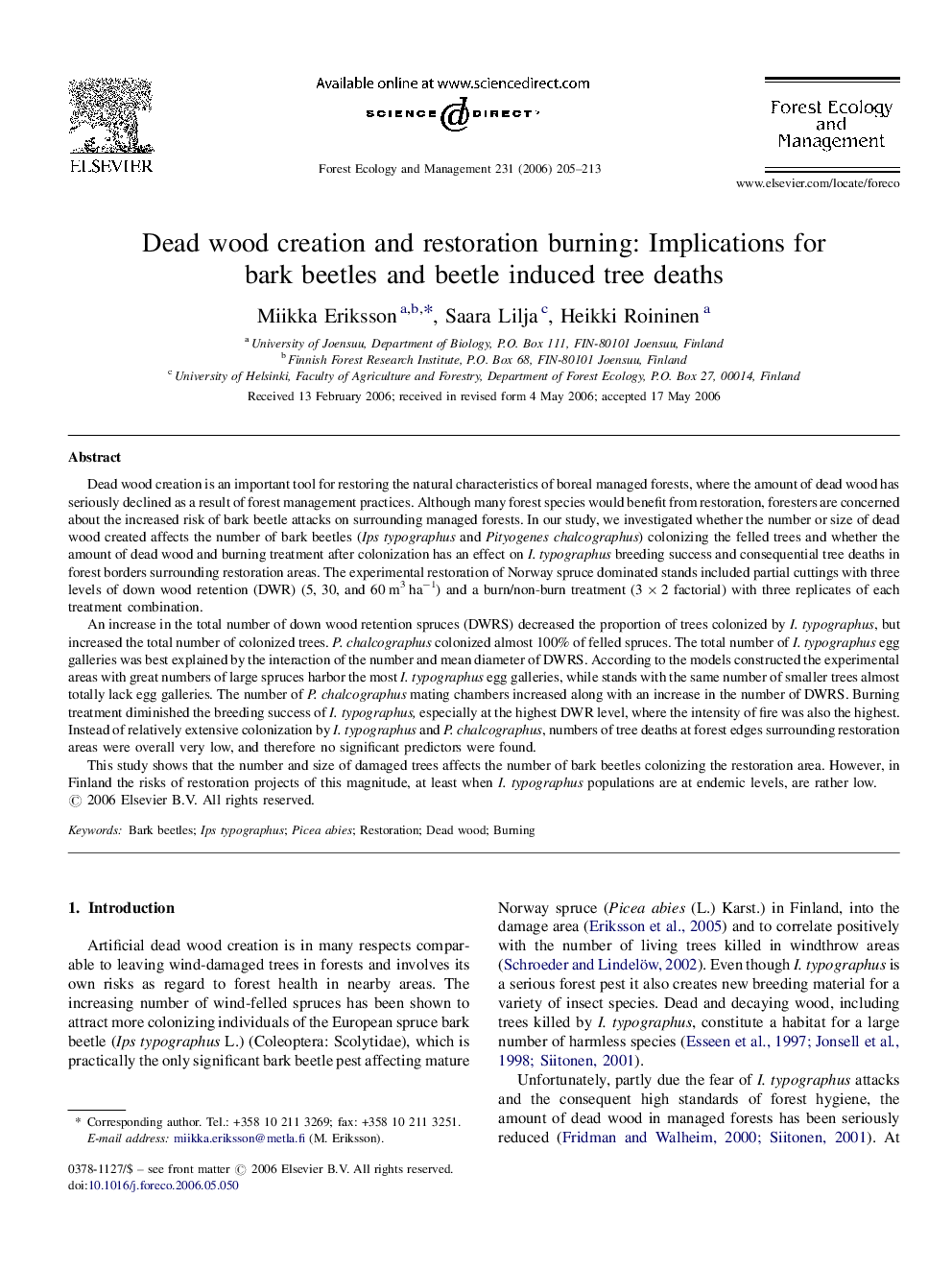| Article ID | Journal | Published Year | Pages | File Type |
|---|---|---|---|---|
| 90881 | Forest Ecology and Management | 2006 | 9 Pages |
Dead wood creation is an important tool for restoring the natural characteristics of boreal managed forests, where the amount of dead wood has seriously declined as a result of forest management practices. Although many forest species would benefit from restoration, foresters are concerned about the increased risk of bark beetle attacks on surrounding managed forests. In our study, we investigated whether the number or size of dead wood created affects the number of bark beetles (Ips typographus and Pityogenes chalcographus) colonizing the felled trees and whether the amount of dead wood and burning treatment after colonization has an effect on I. typographus breeding success and consequential tree deaths in forest borders surrounding restoration areas. The experimental restoration of Norway spruce dominated stands included partial cuttings with three levels of down wood retention (DWR) (5, 30, and 60 m3 ha−1) and a burn/non-burn treatment (3 × 2 factorial) with three replicates of each treatment combination.An increase in the total number of down wood retention spruces (DWRS) decreased the proportion of trees colonized by I. typographus, but increased the total number of colonized trees. P. chalcographus colonized almost 100% of felled spruces. The total number of I. typographus egg galleries was best explained by the interaction of the number and mean diameter of DWRS. According to the models constructed the experimental areas with great numbers of large spruces harbor the most I. typographus egg galleries, while stands with the same number of smaller trees almost totally lack egg galleries. The number of P. chalcographus mating chambers increased along with an increase in the number of DWRS. Burning treatment diminished the breeding success of I. typographus, especially at the highest DWR level, where the intensity of fire was also the highest. Instead of relatively extensive colonization by I. typographus and P. chalcographus, numbers of tree deaths at forest edges surrounding restoration areas were overall very low, and therefore no significant predictors were found.This study shows that the number and size of damaged trees affects the number of bark beetles colonizing the restoration area. However, in Finland the risks of restoration projects of this magnitude, at least when I. typographus populations are at endemic levels, are rather low.
